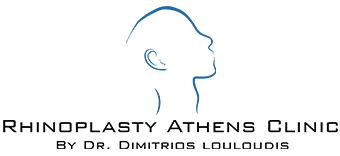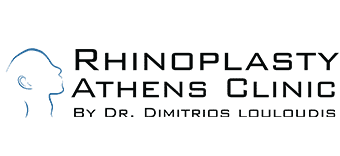Deviation of thenasal septum is a congenital or acquired malformation of the cartilage or bone of the nasal septum or both. The term congenital refers to cases of inherited or injured cartilage at birth with subsequent malformation. The term acquired refers to all those cases where the deterioration occurs in our later life from a nose injury. It is sometimes associated with hypertrophy of the turbinates and / or with deformity of the outer part of the nose.
What are the problems that a deviated nasal septum cause?
It causes severe difficulty in breathing through the nose, which is combined with a whole lot of unpleasant situations that are generally described as deteriorating our quality of life and increased morbidity. Man is a creature who breathes through the nose. The air inhaled by the nose is filtered and cleaned, thermally adjusted so that it does not enter our lungs frozen in winter or hot in summer, adjusts its moisture content, participates in the movement and cleaning of nasal mucus, creating olfaction and taste. Adding to these, headaches, rhinosinusitis and also the most common general infections of our upper and lower respiratory tract, snoring and obstructive sleep apnea, make us realize with how many health problems our body gets burdened , and how much this worsens our quality of life in general.
How do I know if I have a deviated nasal septum?
Some people realize it is because they get tormented, some say they do not know what it is like to breathe through the nose. Others often suffer from one or more of the aforementioned problems (reduced olfaction, sinusitis, pharyngitis, laryngitis, snoring, etc.), some report reduced fatigue resistance, disproportionately greater than their physical condition, and many report that they feel tired after a long sleep.
How is deviation of the nasal septum being diagnosed?
It can be diagnosed very easily and without any pain, with the use of endoscopes, at the office of the Otorhinolaryngologist. Examination may reveal coexisting conditions that we did not know about, such as hypertrophy of the turbinates, rhinosinusitis, allergic rhinitis, nasal polyps, and more.
What is the treatment for nasal septal deviation?
The treatment is exclusively surgical. Many people are afraid because they’ve heard descriptions about hammers and bolsters, gauzes that stay on the nose for 4 days and the removal is extremely painful, often accompanied with fainting upon their removal , for noses that look like eggplants and severe pain that you will never be able to forget, for septums that get crooked very soon after the operation and many more dramatic narratives. It’s time to put an end to all of these, once and for all. The modern endoscopic surgical methods have made this operation completely painless, with an extremely lifelong effect, having finally restored the reputation of such a beautiful surgery, which plays such an important role in improving the quality of our lives.

What do these new methods bring to the table about the nasal septum surgery?
We have endoscopes, high definition cameras, lasers, radiofrequencies and navigation systems that allow us to safely access not only the nose and the inferior turbinates, but also our nasal cavities, up to the forehead and the ethmoid sinus at the back of the skull and behind them. Technological development has provided a huge boost to the specialty of Otorhinolaryngology, and in this case, has made nasal septal surgery to be completely painless, safe and highly effective.
Are there any cases of nasal septal deviation that require rhinoplasty in order to get repaired?
There are cases where nasal septal deviation is associated with oblique deviation of the nose axis (crooked nose), insufficient support or fall of the tip of the nose , or failure of the lateral nasal wall with concomitant nasal valve insufficiency. In these cases, it is necessary, in addition to the straightening of the nasal septum, to repair all these accompanying conditions with functional rhinoplasty. This access may, in the case of oblique axis, be done by closed method (closed or intranasal rhinoplasty). Other cases are ideally treated with open rhinoplasty. The Anglo-Saxon term that describes it (structural approach) gives a very eloquent contribution. It restores the structure and strength of the osseocartilaginous nasal skeleton, using cartillage grafts obtained from the nasal septum and fixed to the desired position with permanent stitches. So what is being said about these cases is that if the roof of our house has been receded, no matter how much we move the furniture inside, we will always be moving on our knees and the space available will always be scanty. The specific nose procedure does not have to change its appearance at all if this is not desirable.
But can anyone, if he wants, combine surgery on his nasal septum with some minor or major changes in the appearance of his nose?
One can combine the straightening of his nasal septum with interventions on the external appearance of his nose. And the operation of open, functional and aesthetic rhinoplasty, with the natural results that achieves, is the best way to ensure it in a painless, modern operation.
And what about the tampons? Is their removal painful?
The doctor uses exclusively Kottler-type soft silicone ventilation tubes that come directly from the US and have replaced the classic use of tampons . This is how we can breath from the nose even on the day of surgery. How wonderful this can be, is described with moving words by the patients themselves who have experienced it.
Do I need to stay at the clinic?
Overnight stay at the clinic is not mandatory. One can return home a few hours after the surgery.
For how long should I be absent from my physical activities? Am I allowed to get sick leave?
The surgery justifies a 15-day sick leave, but the reality is that this modern, painless procedure allows the return to office activities in 2-3 days. Intense physical activity, however, should be avoided for at least 2-3 weeks.
What about the insurance companies?
The operation is usually covered by most private insurance companies, and EFΚA (public social security) also covers in some point the cost.
So, what is the message that these new techniques give to the operation of the nasal septum?
The message is to get properly informed, expel the fears that belong to the past, and give your life the quality that only unobstructed nasal breathing can give you. And if it is medically necessary or you desire it, go for the functional and aesthetic rhinoplasty, which combines ideal breathing and harmony in our appearance, in the best possible way.










